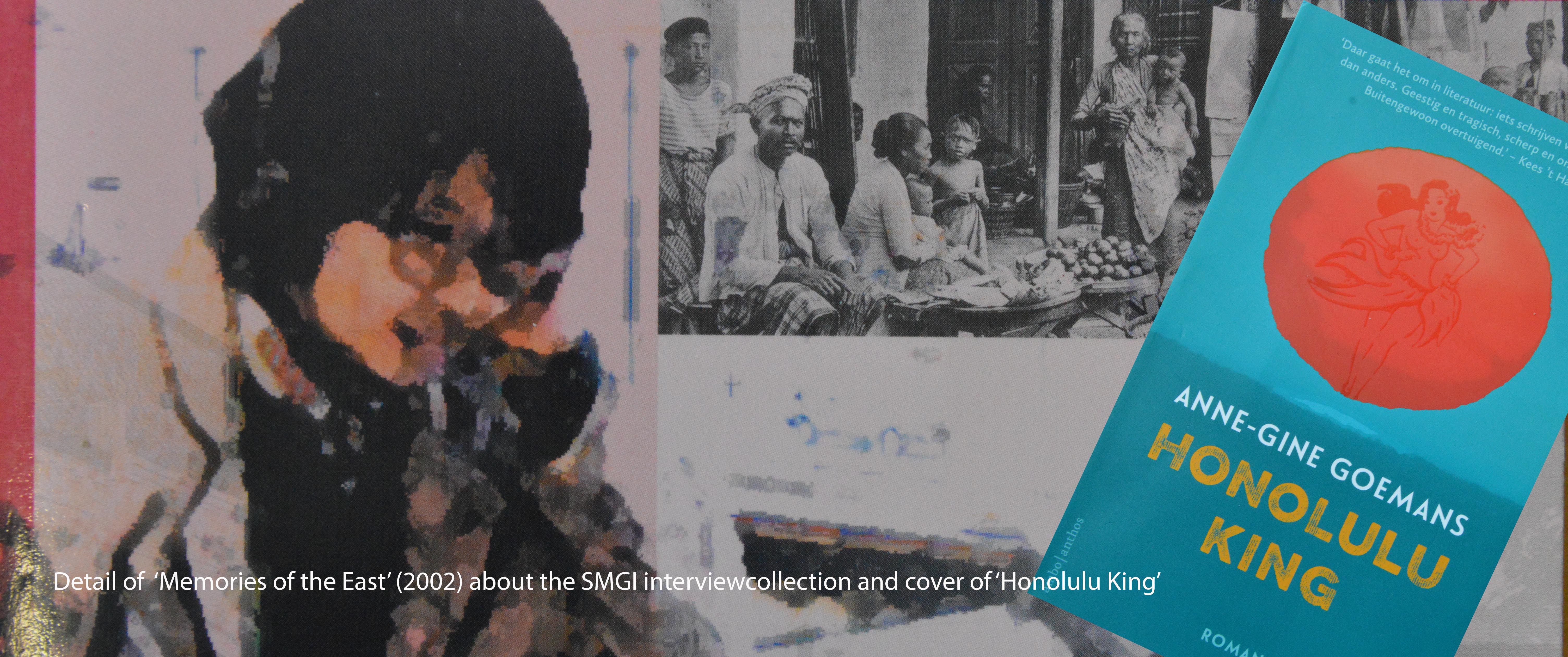
27 Jan Blog: True stories in fictionalized settings
To my surprise I encountered an old Oral History project of mine, the SMGI, featuring in a novel, writes Fridus Steijlen. And it plays its role with excellence.
Between 1997 and 2001 I coordinated the Foundation for the Oral History of Indonesia (Stichting Mondelinge Geschiedenis Indonesië – SMGI). We interviewed 724 people about their lives in the Netherlands East Indies. The 2.800 hours of interviews are catalogued and accessible for researchers in the KITLV collection at the University Leiden Library. I know people use it, but in most cases I do not see the results. That was until I read Honolulu King a novel by Anne-Gine Goemans.
The main character in the novel is Hardy an old Indo-European man who owns a small restaurant in the town of Haarlem and was a former member of the Hawaiian band Honolulu Kings. He wants to be member of the freemasons. In one of his initiation lectures for his brothers he makes a confession. He had seen his family being killed by Indonesians during the revolution in the 1940s. He took revenge by cold-bloodedly killing the perpetrators in later years. The freemason brothers were in shock and wanted to delve into his history. Friends of Hardy give the brothers a box of tapes with stories of Indisch people who visit Hardy’s restaurant.
Hardy was a natural oral historian, inviting aged customers to talk about their experiences during the Japanese occupation and Indonesian revolution. By saving these stories on tapes he created an oral history collection. Many anecdotes from Hardy’s collection enter the pages of Honolulu King. For example, when his granddaughter listens to the tapes to explore her grandfather’s history. Or when Hardy and his friends try to remember specific anecdotes and listen to the tapes together. And of course when the freemason brothers write their report about Hardy’s background.
All these small and larger stories make the novel lively and create a colorful and genuine ambiance. Then, to my delight, I read in the acknowledgments that the stories of ‘Hardy’s tapes’ were taken from the SMGI-interview collection which I coordinated years ago. That explained why I recognized some of the anecdotes!
Not only anecdotes from the interviews figure in the novel. Because Hardy created a collection in his small restaurant, the SMGI collection itself figures in the novel. The stories and collection resonate real experiences in a fictionalized setting.
At some point in the novel the freemason brothers make an enquiry into the backgrounds of Hardy’s confessions. They miss him when they want to talk with him in the restaurant. His friends offer them a crate with interviews instead. “The first generation that came to the Netherlands. Men and women who experienced the Netherlands Indies and the Japanese occupation. All first hand, so to say.”, they tell the brothers. When the brothers ask whether or not the interviews are reliable, Hardy’s friends respond: “Do you ask Jews who survived concentration camps whether their story is reliable?”
The stories and the collection figuring in this novel feels like a standing ovation for the life stories of the 724 people we once interviewed.
(Fridus Steijlen is senior researcher at KITLV working on postcolonial migration and daily life in present day Indonesia.)




No Comments